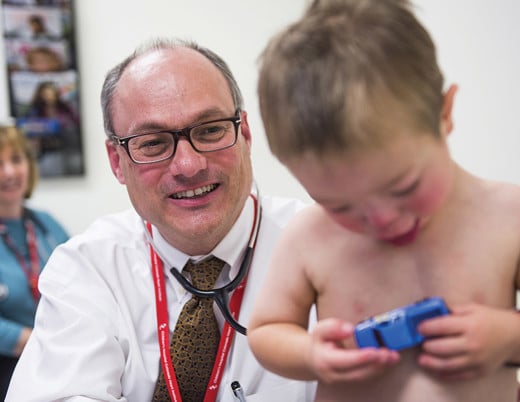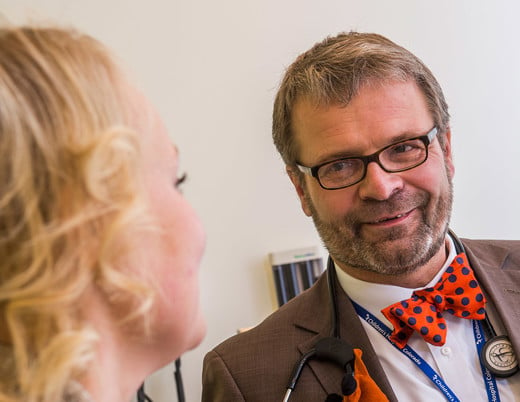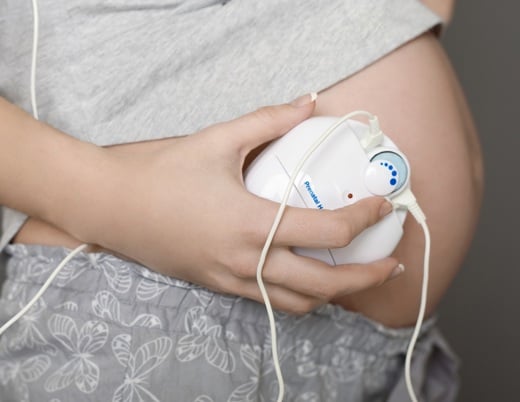How effective are subcutaneous implantable cardioverter defibrillators (S-ICDs) as the first line of therapy for pediatric patients?
Having a permanent device implanted in your body is a big step for anyone — especially children. For pediatric patients with congenital heart disease (e.g., tetralogy of Fallot or hypertrophic cardiomyopathy) or those with an inherited arrhythmia syndrome (e.g., long QT syndrome or Brugada syndrome), there are two primary options available — transvenous implantable cardioverter defibrillators (TV-ICDs) and subcutaneous ICDs (S-ICDs). While S-ICDs are less invasive, researchers set out to determine how safe and effective they are compared to TV-ICDs among pediatric patients.
The evolution of ICDs
For more than 40 years, TV-ICDs have been the gold standard for treating life-threatening heart rhythms, but they are not without drawbacks. For one, they are more invasive with leads running through a vein and directly into the heart. Despite decades of advances in transvenous lead technology, there are still complications with lead fractures and device-associated endocarditis. Though the risk for infection over the lifetime of a device is relatively low (about 2% to 3%), any device infection has to be treated as if it involves the heart tissue as well. Additionally, as scar tissue forms between the vessel walls and the lead itself, replacing leads becomes much more difficult.
“It’s not that TV-ICDs are outdated technology. They still serve an important purpose for patients who need both shocks to terminate potentially fatal arrhythmias and pacemaker protection from bradycardia,” says Johannes von Alvensleben, MD. “Regardless of which therapy is appropriate, the goal remains the same with TV-ICDs and S-ICDs: treating patients with the best, safest therapy available with the least complications.”
S-ICDs were approved by the FDA over ten years ago and were designed as a disruptor to reduce lead-related complications and minimize the risks associated with systemic infections and device extraction. Although a bit larger, S-ICDs are implanted under the skin at the side of the chest and connect to a lead that runs along the ribs and breastbone but does not attach to the heart itself. Early studies demonstrated the safety and efficacy of S-ICDs in adults, but widespread adoption in children has been slow — potentially due to a lack of clear guidelines and studies on effectiveness.
As with most new technologies, it takes a while for people to see the benefits and move past apprehensions. Even though S-ICDs have been around for over a decade, further evidence of their effectiveness among children brings more value to pediatricians, patients and their families.
How do ICDs compare in pediatric populations?
While studies in adult patients have shown TV-ICDs and S-ICDs to have comparable rates of complications, including inappropriate shocks, data was lacking in the pediatric population. To help address this deficiency, Drs. von Alvensleben, Kathryn Collins, MD and Michal Schäfer, PhD, led a multicenter international review (the largest study of its kind) of S-ICD implantation in a wide range of pediatric patients, including those with congenital heart disease.
“It’s critically important that we perform these multicenter studies,” says Dr. von Alvensleben, “because it shows it wasn’t just us [Children’s Colorado] getting these results — that other centers were seeing similar rates of effectiveness as TV-ICDs.”
As seen in adult studies, the researchers found the S-ICD to be comparable to TV-ICD systems. Notably, the S-ICD was highly successful in converting ventricular arrhythmias to normal rhythm (demonstrating efficacy), with both systems having similar overall rates of complications (demonstrating safety). Given the potential for severe and invasive complications among TV-ICD systems, S-ICDs provide an alternative without endocarditis or lead failure risks.
S-ICDs as a first line of therapy
If patients do not require pacing, an S-ICD should be strongly considered — especially because lead failure in pediatric patients is particularly high (up to 21% of patients) with TV-ICD systems. They are less invasive, as effective as TV-ICDs, the procedures are frequently shorter and patients can return to normal activities more quickly.
The overall procedural risk is low with S-ICDs, and unlike TV-ICDs, there are no risks of blood vessel and heart damage or lung injury during implant. Both S-ICDs and TV-ICDs have a long-term risk of inappropriate shocks, but this can frequently be resolved by changing the sensing vector. For a number of reasons, pediatric patients have a higher risk of inappropriate shocks and S-ICDs have not decreased this. What has been significantly reduced is the risk of lead-related complications and the need to explant devices secondary to infection. By having an entirely extravascular system, possible infections can be treated conservatively and without risk of involving heart structures.
The most important consideration when evaluating patients for an S-ICD is whether they “screen-in” during eligibility testing. The novel nature of the sensing lead being located outside the heart means that some patients simply do not qualify for an S-ICD. Eligibility testing should involve several different positions and include exercise, as pediatric patients are much more active than their adult counterparts.
“S-ICDs should be considered and offered to most patients,” Dr. von Alvensleben says. “The greatest barrier is the change in workflow — from patients and provider education to the synthesis of a new dataset.
The future of S-ICDs
According to Dr. von Alvensleben, the future of S-ICD technology looks very promising — from smaller devices with improved battery life for the tiniest of patients to fine-tuned sensing algorithms that help reduce inappropriate shocks.
While T-wave oversensing (i.e., double counting the heart rate) is the most commonly reported cause of inappropriate shock in pediatric patients, there are high-pass filters designed to reduce oversensing of lower frequency signals (such as T-waves) while appropriately counting higher frequency R-waves (i.e., the peak seen in an ECG). These filters will likely improve as future studies incorporate patient-specific characteristics and exercise testing.
Most exciting will be “customized algorithms” that allow an S-ICD to register a patient’s ECG in a template library. This advancement would do away with the need for eligibility screening and further expand the applicability of S-ICDs to a broader range of pediatric patients. Additionally, the template could be updated as a patient’s ECG changes with their developing heart disease, reducing the risk of inappropriate shock.
“We are also interested in conducting a follow-up study of the original cohort from the multicenter review,” Dr. von Alvensleben says. “The research we conduct will not only help drive innovation of these devices in pediatrics but also in adult [medicine].”
Ultimately, as the underlying technology improves, so will the eligibility criteria and guidelines — expanding access to a wider range of patients.
Featured Researchers

Johannes von Alvensleben, MD
Director, Pediatric and Adult Electrophysiology Program
The Heart Institute
Children's Hospital Colorado
Associate professor
Pediatrics-Cardiology
University of Colorado School of Medicine





 720-777-0123
720-777-0123










